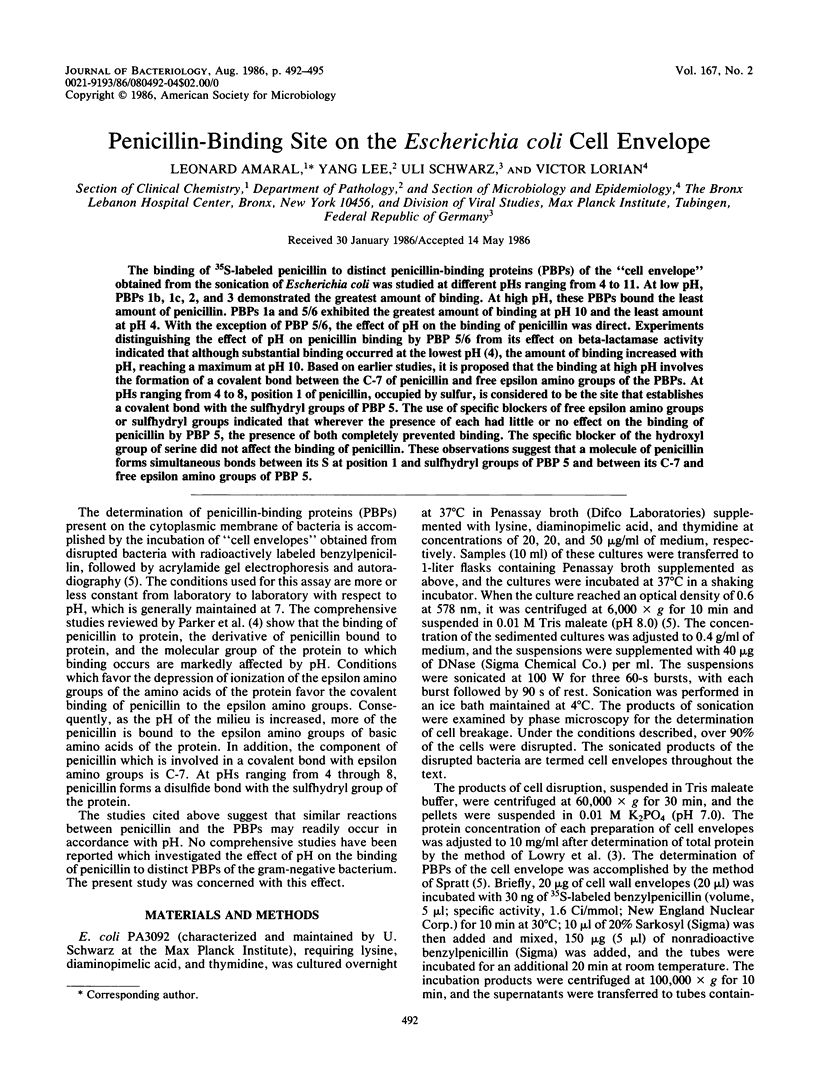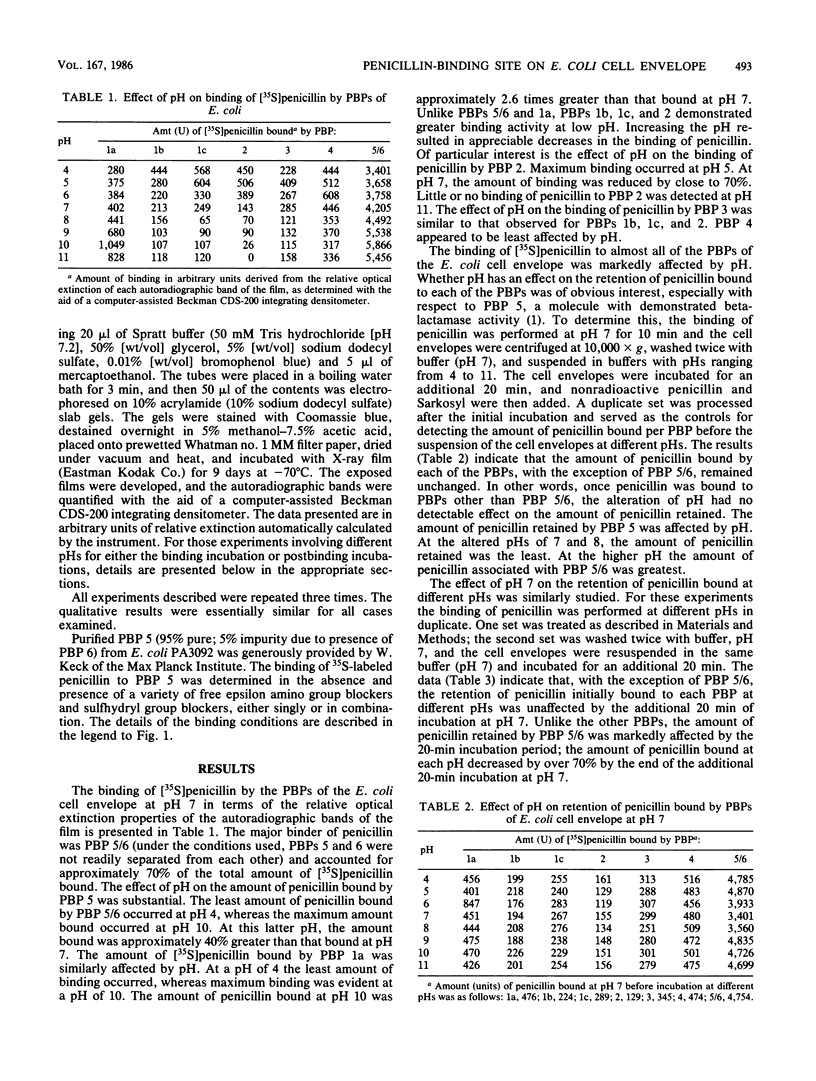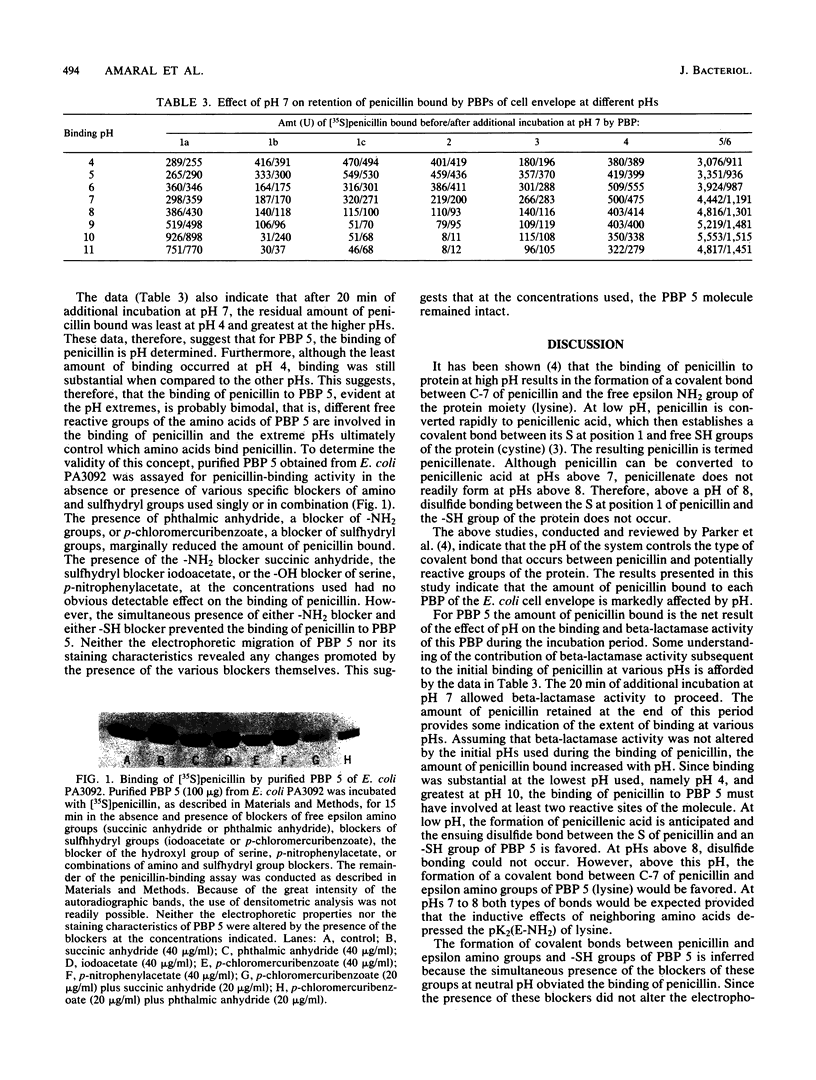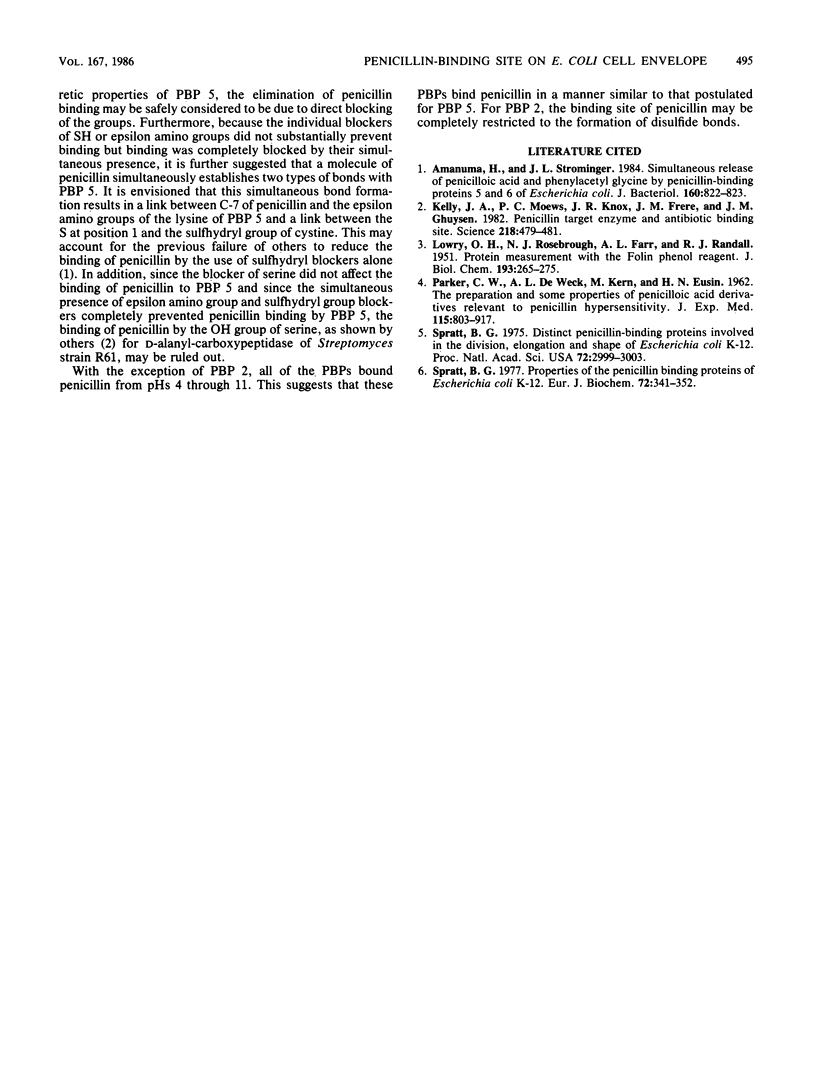Abstract
The binding of 35S-labeled penicillin to distinct penicillin-binding proteins (PBPs) of the "cell envelope" obtained from the sonication of Escherichia coli was studied at different pHs ranging from 4 to 11. At low pH, PBPs 1b, 1c, 2, and 3 demonstrated the greatest amount of binding. At high pH, these PBPs bound the least amount of penicillin. PBPs 1a and 5/6 exhibited the greatest amount of binding at pH 10 and the least amount at pH 4. With the exception of PBP 5/6, the effect of pH on the binding of penicillin was direct. Experiments distinguishing the effect of pH on penicillin binding by PBP 5/6 from its effect on beta-lactamase activity indicated that although substantial binding occurred at the lowest pH, the amount of binding increased with pH, reaching a maximum at pH 10. Based on earlier studies, it is proposed that the binding at high pH involves the formation of a covalent bond between the C-7 of penicillin and free epsilon amino groups of the PBPs. At pHs ranging from 4 to 8, position 1 of penicillin, occupied by sulfur, is considered to be the site that establishes a covalent bond with the sulfhydryl groups of PBP 5. The use of specific blockers of free epsilon amino groups or sulfhydryl groups indicated that wherever the presence of each had little or no effect on the binding of penicillin by PBP 5, the presence of both completely prevented binding. The specific blocker of the hydroxyl group of serine did not affect the binding of penicillin. These observations suggest that a molecule of penicillin forms simultaneous bonds between its S at position 1 and sulfhydryl groups of PBP 5 and between its C-7 and free epsilon amino groups of PBP 5.
Full text
PDF



Images in this article
Selected References
These references are in PubMed. This may not be the complete list of references from this article.
- Amanuma H., Strominger J. L. Simultaneous release of penicilloic acid and phenylacetyl glycine by penicillin-binding proteins 5 and 6 of Escherichia coli. J Bacteriol. 1984 Nov;160(2):822–823. doi: 10.1128/jb.160.2.822-823.1984. [DOI] [PMC free article] [PubMed] [Google Scholar]
- Kelly J. A., Moews P. C., Knox J. R., Frère J. M., Ghuysen J. M. Penicillin target enzyme and the antibiotic binding site. Science. 1982 Oct 29;218(4571):479–481. doi: 10.1126/science.7123246. [DOI] [PubMed] [Google Scholar]
- LOWRY O. H., ROSEBROUGH N. J., FARR A. L., RANDALL R. J. Protein measurement with the Folin phenol reagent. J Biol Chem. 1951 Nov;193(1):265–275. [PubMed] [Google Scholar]
- PARKER C. W., DEWECK A. L., KERN M., EISEN H. N. The preparation and some properties of penicillenic acid derivatives relevant to penicillin hypersensitivity. J Exp Med. 1962 Apr 1;115:803–819. doi: 10.1084/jem.115.4.803. [DOI] [PMC free article] [PubMed] [Google Scholar]
- Spratt B. G. Distinct penicillin binding proteins involved in the division, elongation, and shape of Escherichia coli K12. Proc Natl Acad Sci U S A. 1975 Aug;72(8):2999–3003. doi: 10.1073/pnas.72.8.2999. [DOI] [PMC free article] [PubMed] [Google Scholar]
- Spratt B. G. Properties of the penicillin-binding proteins of Escherichia coli K12,. Eur J Biochem. 1977 Jan;72(2):341–352. doi: 10.1111/j.1432-1033.1977.tb11258.x. [DOI] [PubMed] [Google Scholar]



